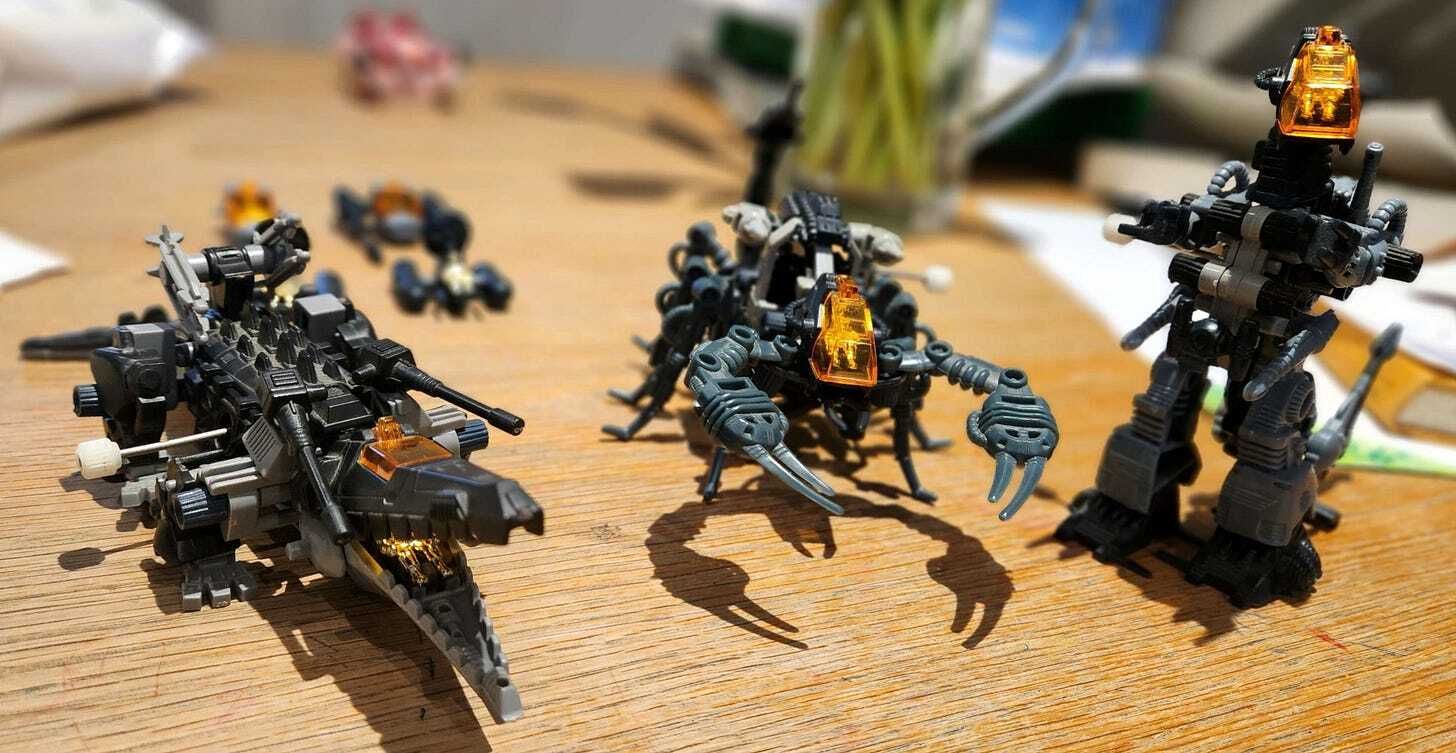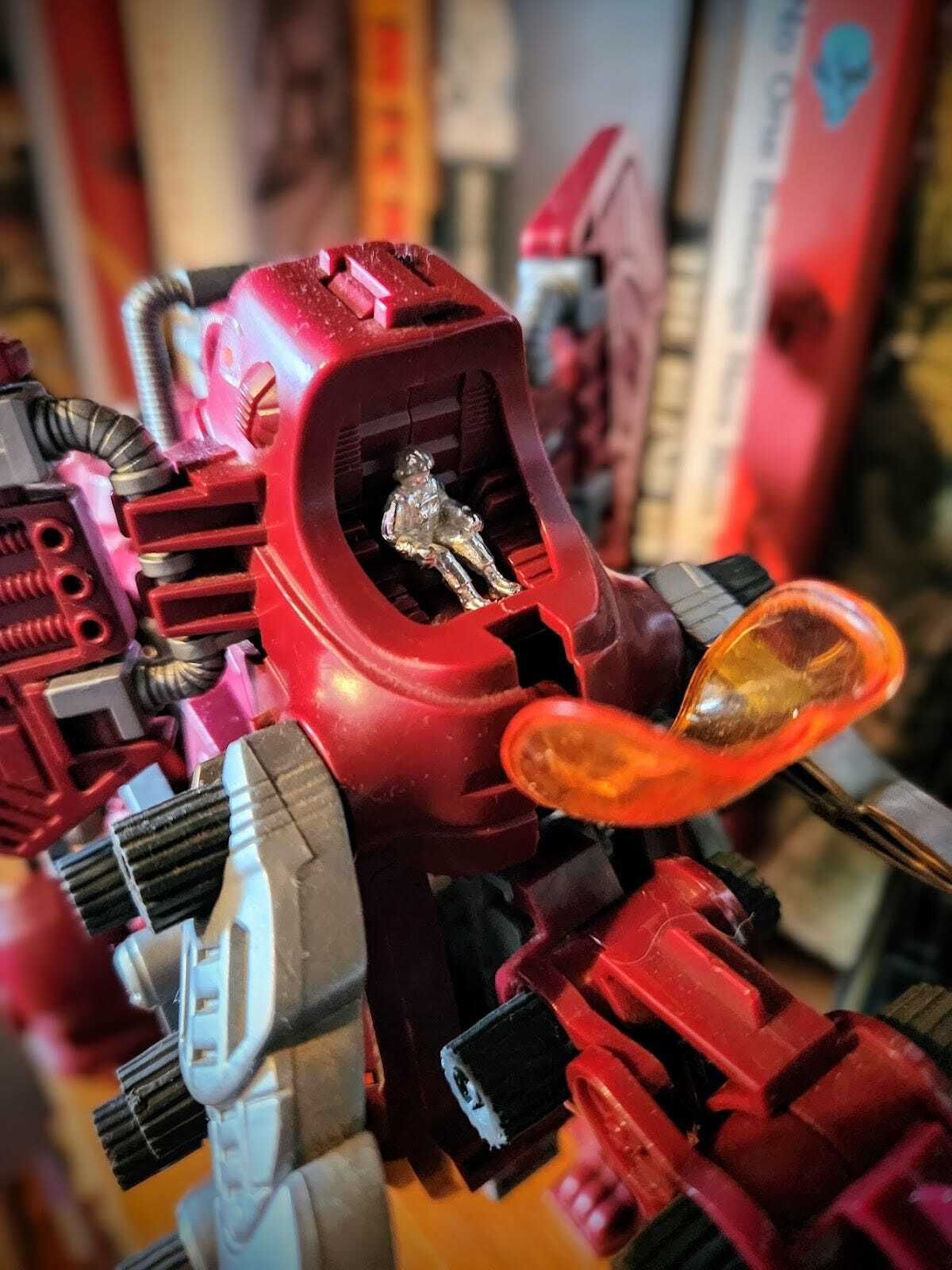
Forgive me a slight digression - but Zoids are still robots, right? The Transformers weren’t the only heavy metal war in town in the mid-1980s - and, in the UK especially, the short-lived build-it-yourself Zoid craze was an off-ramp to a different kind of play.
Part 1: The Toys
The UK Transformers comic so endures for those of us of a certain vintage primarily because it refused to accept its fate. The British editorial team - staring with hungry eyes at the rival and far more transgressive and liberated sci-fi Brit-book 2000AD - were not content to make a throwaway kids’ comic. They strained aggressively against the limitations of stories starring toy cars that cost £2.99 from Woolworths, thus creating memorable characters, shocking setpieces, ambitious all-ages science-fiction and a loose yet elaborate continuity spanning years.
Yet their efforts were often fatally undermined by the comparatively diminished aspirations of reprinted US stories which ran in between the UK-originated strips. While the American strips had unforgettable highlights, their default gear became lightweight, concept stories with very little continuity, too often defined by the need to cynically promote that month’s new Hasbro toy (clearly the US writer did not enjoy this either). A UK peak would increasingly regularly be followed by a US comparative trough.
So picture instead a world in which the UK Transformers creators suffered no such shackles. No riding on the coattails of a US comic itself in hock to licensor demands and with little desire to challenge its young readership. A world where instead they had free reign to create a tight, bleak, brutal, amoral and often psychological science-fiction epic of their own devising.

I give you Zoids - but we’ll get to the surprisingly bleak and gritty UK comic in the next newsletter. First, let’s look at the (excellent) toys upon which it was based.
As a toyline, Zoids was a natural next station for Euro-kids (the line and its fiction was very different in both the US and Japan) who’d hopped aboard the Transformers train a couple of years previously. Giant death-dealing robots with snap-on weapons - check. Two warring factions - check. A degree of inappropriate fragility that makes parents weep: check. But Zoids went next-level, straddling the line between small kids’ toy cars and big kids’ and grown-ups’ Airfix models and RC vehicles.

This was a toy delivered on a nested set of sprues, whose dozens of parts must then be clipped off and carefully assembled around a core motor. In the process, this taught inquiring young minds a valuable thing or two about gears, levers and cambers.
(This in turn meant Zoids was the only toyline my engineer father actively pushed on me, hoping in vain that I might one day follow in his footsteps. Meccano was and remains his poison - there is a strikingly clear legacy there, even if professionally I fell into a world of words instead).

They could be endlessly customised with parts from other Zoids, they could be dismantled and rebuilt on a whim - and their clockwork or battery-powered motors enabled them to determinedly (if glacially) stomp, roll or slither towards their foes, before colliding in a catastrophic tangle of red and blue parts.
A toy robot that could ‘only’ change between two (or three, or six) modes suddenly seemed so thin by comparison to these living, home-built monster machines. While Zoids was far from its greatest threat, it’s nevertheless little wonder Transformers turned to inventive gimmicks like Headmasters to sustain itself.

The aesthetic of the Zoids toys was also a departure from the colourful, blocky, cheerful Transformers (or indeed colourful, curvy, cheerful rival toylines such as He-Man and Thundercats). The original line of Zoids were often skeletal and believably machine-like, all exposed, clanking levers and cockpit-faces, and each piloted by eerily anonymous chrome pilots.

There was a faintly nightmarish quality to it all, almost Baby’s First Warhammer 40,000 (furthered by the do-it-yourself aspect) - which the toy packaging absolutely played up to. Still-striking product photography sets the Zoids’ eternal war within a blasted hellscape, while the copy is a lurid mix of apocalyptic nihilism and far too many exclamation marks.

Perfunctory names like Aquazoid, Terrazoid and Giant ZRK soon gave way to the thoroughly Games Workshop-esque likes of Mammoth The Destroyer, Gore The Lord of Protector and Krark, Prince of Darkness. If Transformers was bright, accessible pop music, Zoids was metal - threatening, edgy, demonic.
In 1986 and 1987, it was a siren call to the increasingly complex and darkening minds of kids now ready to level up from much more accessible Transformers toys and media. (Or, at least, to the weird boys who didn’t frictionlessly progress from toys to football, or whose parents weren’t wealthy enough to grant them their first games console).

In other words, Zoids was a perfect springboard for a Marvel UK editorial team shackled to toy-based comics like Transformers, Thundercats and The Real Ghostbusters, yet forever yearning to create their own 2000AD.
To be continued...
If you enjoyed this, please consider subscribing to A Million Robots. You’ll get 1-2 free articles emailed to you each week.
I don’t have a full-fat paid subscription option yet, but these do take a lot of time and effort. If you’d like to chuck a few quid/bucks at me per month to support writing them, you can do so here. I’ll be eternally grateful, and solemnly promise to spend it all on more robots.
